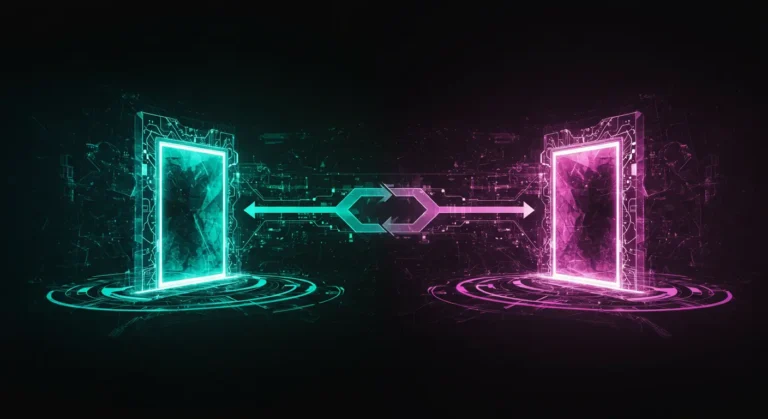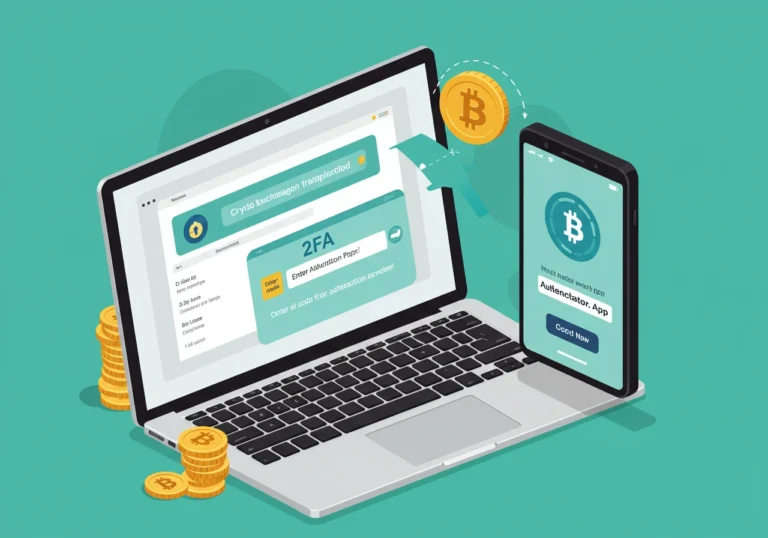How to Use Blockchain Explorers to Track Scammers
Blockchain Explorers are the first tool you reach for when you want to see what happened on-chain. They are public, searchable windows into blockchains: you can look up addresses, transactions, smart contracts, and token flows. This article walks you through practical steps and simple checks you can do right now to start tracking fraudulent crypto transactions, monitoring suspicious wallet activity, and helping investigations without needing specialist skills.
How Blockchain Explorers work and why they matter

A blockchain explorer is a website or tool that reads the blockchain and shows it to you every transfer, every token swap, every contract call is recorded on-chain as data. Explorers decode that data so you can see who sent what, when, and where.
This public record is what makes blockchains special: transparency. Even when scammers try to hide, their money leaves traces. By analyzing blockchain explorer data, you can follow those traces, map how funds moved, and find patterns that suggest fraud. You don’t need to be a coder — just curiosity and a steady process.
Start with a transaction: the simplest tracing step
When something goes wrong, the best starting point is a transaction hash. This is a long string that uniquely identifies a transaction. If you have it, paste it into a reputable explorer (for Ethereum use Etherscan; for BSC use BscScan; for Bitcoin use Blockchair or similar).
Look for these simple things on the transaction page:
- The from and to addresses. Who sent and who received?
- The value and token transfers. Did ETH move, or tokens? Check the “Token Transfers” tab.
- The timestamp and block number. When did it happen?
- The status (success or failed). A failed transaction still reveals intent.
- Input data / decoded function calls. Explorers often translate contract calls into readable actions.
These first checks answer basic questions: Did the transaction send funds to a scammer? Did it approve a contract to spend your tokens? If so, the next steps become clearer.
Identify common scam clues quickly
Certain patterns on an explorer often indicate fraud:
- Very large one-way transfers to a single new address with no incoming funds. That looks like someone pulling money out.
- Many tiny incoming transactions then a big outgoing move: this is often aggregation by a scammer who collects funds from many victims.
- Newly created tokens or contracts with unusual minting: if a token mints massive balances to the creator, it can be a red flag.
- Token approvals to unknown contracts: approving unlimited allowance is a common vector for theft.
- Multiple wallet addresses interacting in a short time — possible laundering or automated bots.
Seeing these signs, you can record the evidence and continue following the money.
How to map where funds go: follow-the-money basics
Tracing a scammer is mostly a chain of follow-the-money steps. Use the explorer’s links to move from one address to the next:
- From the victim’s address, open the outgoing transaction and click the recipient address.
- On the recipient’s page, sort transactions by incoming or outgoing value to see where funds went next.
- Repeat this process. Look for exchanges, bridges, or big aggregators — places where stolen funds might be cashed out.
- Watch for patterns: many scam operations funnel funds through the same few addresses or contracts.
When tracking, be methodical. Take screenshots, copy transaction IDs, and keep a simple log. That documentation helps if you report to an exchange, a wallet provider, or the police.
Use token and contract pages to dig deeper

Token pages on explorers show total supply, holders, and large transfers. If a token linked to a scam has suspicious tokenomics, you’ll see it:
- Big holders list: who owns most tokens? If one wallet holds a huge percentage, that’s risky.
- Transfer history: sudden large mints or burns appear here.
- Contract verification: trusted projects publish verified source code; unverified contracts are riskier.
A contract creation transaction is also revealing. It shows when the contract was deployed and by whom. If multiple scam-related tokens share the same deployer address, they may be connected.
Monitoring suspicious wallet activity over time
Explorers let you “watch” addresses. Add an address to a watchlist or bookmark it in a spreadsheet. Check it daily for:
- New outgoing transfers
- Approvals granted to other contracts
- Swaps that suddenly convert tokens to stablecoins or ETH
This is basic monitoring suspicious wallet activity. It’s how community detectives spot patterns and warn others. Set alerts where available — some explorers or third-party services notify you when an address moves funds.
From tracer to investigator: connecting dots with analytics
Explorers are great for single transactions, but scams often span many wallets. Analytics platforms and dashboards build on explorer data to show clusters, labels, and charts. They can help when you are investigating blockchain scam schemes by:
- Showing clusters of addresses controlled by the same actor (based on heuristics).
- Flagging addresses linked to known scams or exchanges.
- Visualizing fund flows in graphs that make complex patterns readable.
You don’t need advanced tools to begin, but if you plan to help others or compile evidence, analytics dashboards save time.
Spotting mixing and obfuscation techniques

Scammers try to hide funds using mixers, tumblers, cross-chain bridges, or many small transfers. On explorers you can spot signs:
- Transfers to a known mixing contract or bridge. That often slows tracing.
- Many small transactions to new addresses in a short time (a “fan-out” pattern).
- Rapid on-chain swaps between tokens that make the trail noisy.
Even when mixers are used, traces sometimes reappear when funds hit an exchange or a weak point. Don’t expect perfect tracking past obfuscation, but document everything you can.
What to do when you find exchange deposits
A hopeful moment is when stolen funds land at a centralized exchange. Many exchanges have compliance teams that freeze funds if given evidence.
Steps to take:
- Note the transaction ID where funds entered the exchange address.
- Check the exchange’s deposit policy and official reporting channel (support, compliance email, or law enforcement liaison).
- Provide transaction IDs, timestamps, and your contact info. Be clear and factual.
- Report to local law enforcement if the loss is significant.
Exchanges respond faster when you provide clear chain evidence from explorers. That’s where your screenshots and logs matter.
How to use explorers to check approvals and revoke access
Many scams begin with users approving a malicious contract to spend their tokens. Use explorers to check approvals:
- Look for “Token Approvals” or “ERC-20 Approvals” on your address page.
- Identify any contracts with high allowances.
- If you find suspicious approvals, use reputable revocation services or your wallet to reduce or revoke allowances.
This is a direct prevention step: removing dangerous approvals stops automated stealing even if you once gave permission.
Share findings carefully and ethically
If you publish an accusation, be careful. Publicly naming an address as “scammer” without evidence can cause harm. Instead:
- Share factual data: transaction IDs, time, amounts, and clear screenshots.
- Use community reporting channels or trusted groups that vet claims.
- Cooperate with law enforcement when asked. They know how to handle sensitive steps, subpoenas, and legal requests.
Good community reporting helps others avoid loss while protecting innocent parties from false accusations.
Tools and resources that complement explorers
Aside from basic explorers, a few tools help:
- On-chain analytics dashboards (for broader patterns).
- Watchlists and alert services (to notify you of address activity).
- Token trackers showing big transfers and suspicious mints.
- Revocation services to remove approvals.
These tools work with explorers and make your job easier. Use trusted services and check reviews before connecting wallets.
Limitations: what explorers cannot do
Be honest about limits. Explorers show on-chain facts, but they do not reveal off-chain identities. If funds move through a peer-to-peer over-the-counter trade, or into a privacy mixer and out to an exchange that does not cooperate, the trail may stop.
Also, some scam operations use complex smart contracts that are hard to decode. Explorers give you the data, but interpretation sometimes needs expertise.
Quick checklist for everyday tracking
- Collect the transaction hash and victim address.
- Paste the hash into an explorer and screenshot the page.
- Click recipient addresses and follow outgoing flows.
- Check token pages, holder balances, and contract creation.
- Watch addresses and set alerts where possible.
- If funds reach an exchange, gather evidence and report through the exchange channel.
Conclusion
Blockchain explorers turn raw on-chain data into a readable trail. They let anyone do the first, crucial steps of tracking fraudulent crypto transactions, identifying fraudulent transactions, and monitoring suspicious wallet activity. With patience and simple routines — copying hashes, following funds, checking approvals, and reporting to exchanges — you can help protect yourself and others. If something serious happens, gather records, contact the exchange, and involve law enforcement. One calm, documented report can stop a scammer from hurting more people.
Summary
- Blockchain Explorers show public on-chain data for addresses, transactions, and contracts.
- Start with the transaction hash and follow outgoing transfers.
- Look for red flags: one-way drains, token mints, and large approvals.
- Use token and contract pages to check holders and minting history.
- Monitor addresses with alerts and document everything.
- Report to exchanges when funds hit known deposit addresses.
- Revoke suspicious token approvals to stop ongoing theft.
- Use analytics dashboards for complex schemes and patterns.
Frequently Asked Questions
Q: Can anyone trace stolen crypto with an explorer?
A: Yes — explorers show on-chain facts anyone can view. Tracing is often straightforward for a few hops but can get harder as scammers use mixers or many transfers.
Q: What if stolen funds go through a mixer?
A: Mixers obscure the trail. Tracing may continue if funds later touch an exchange or a weak point. Report the incident and keep detailed records.
Q: Should I publicly name a wallet as a scammer?
A: Avoid public accusations without strong evidence. Share facts on trusted reporting channels and let exchanges or law enforcement handle identity or takedown steps.
Q: How long should I monitor a suspicious address?
A: Monitor until the funds reach an exchange or are clearly laundered. Set alerts for weeks; scammers sometimes lay low before cashing out.
Q: Can explorers help recover stolen crypto?
A: Explorers provide the evidence you need to report crimes. Recovery depends on exchanges, legal action, and how the scammer moved the funds.
Table of Contents

Hello, I’m Edmilson Dias, founder of CoinBringer. I created this platform to guide people through the fast-moving world of cryptocurrency with clarity and safety. With years of research in blockchain and digital security, my goal is to translate complex topics into practical knowledge, offering reliable tutorials, safety insights, and guidance for both newcomers and experienced users.
Discover more from CoinBringer
Subscribe to get the latest posts sent to your email.







